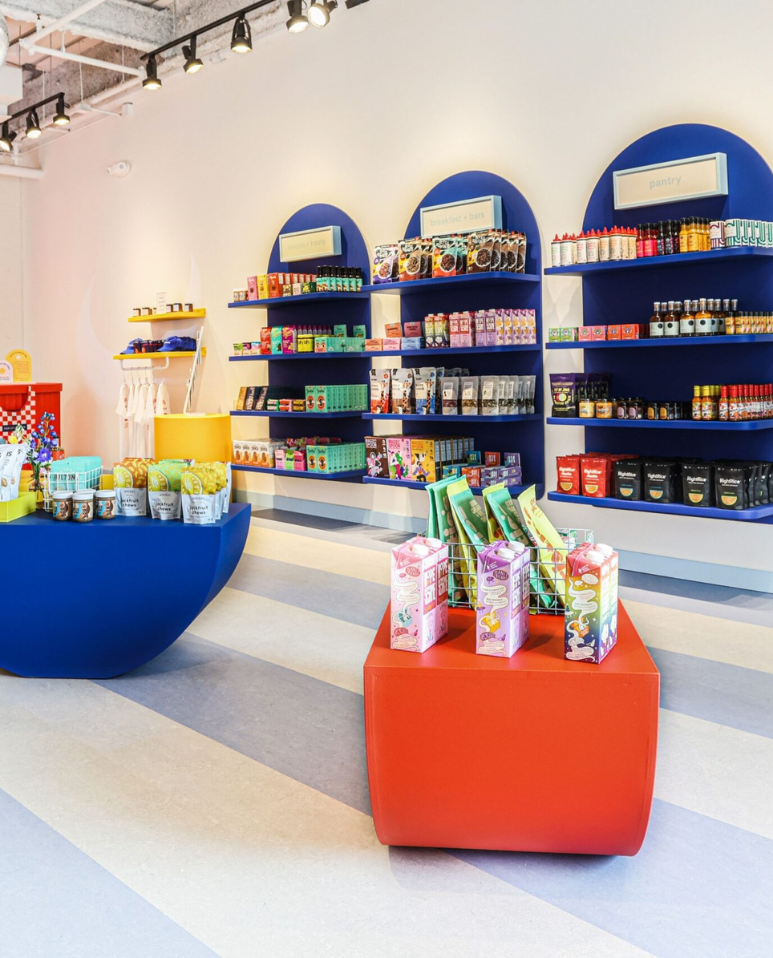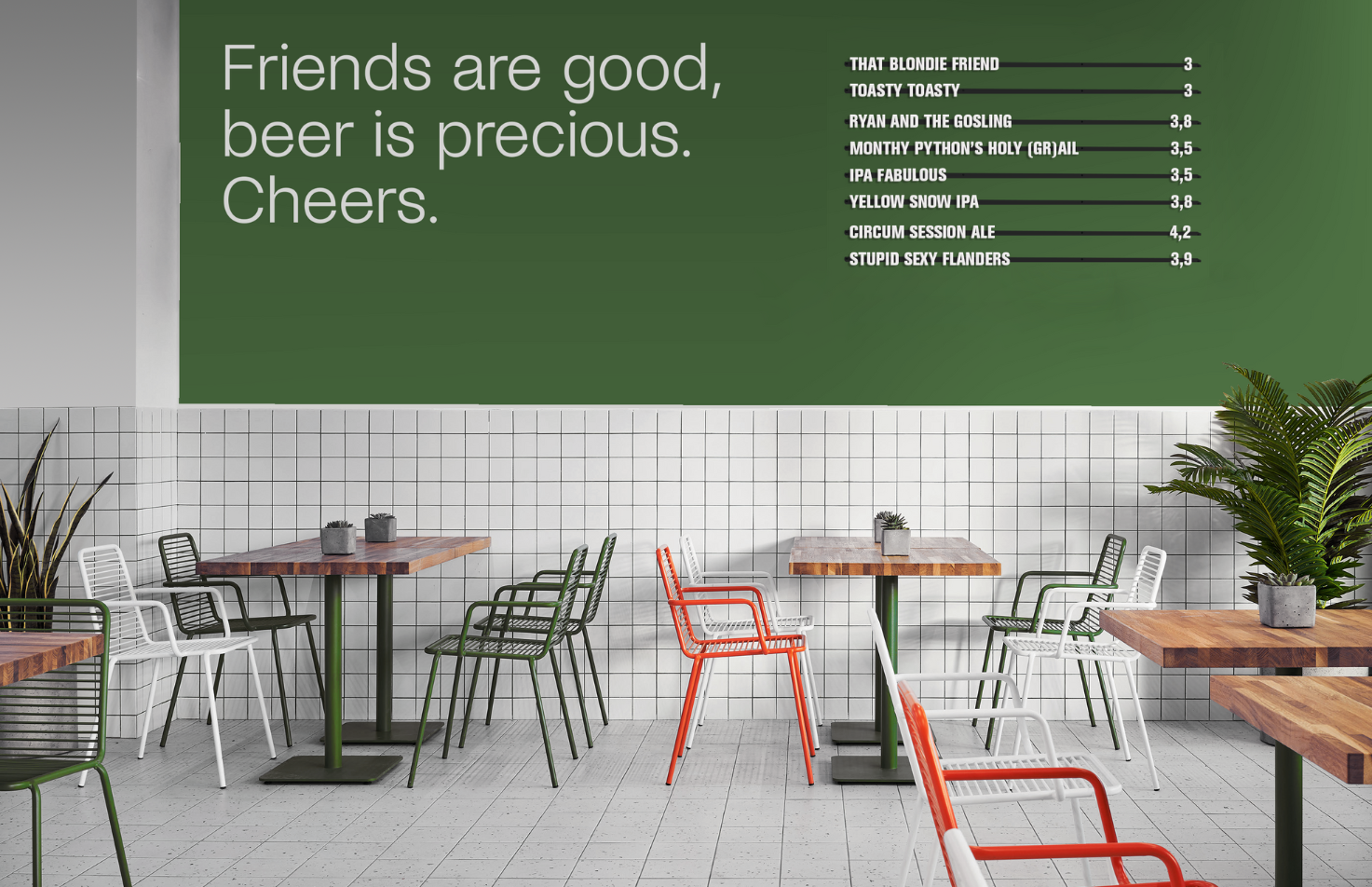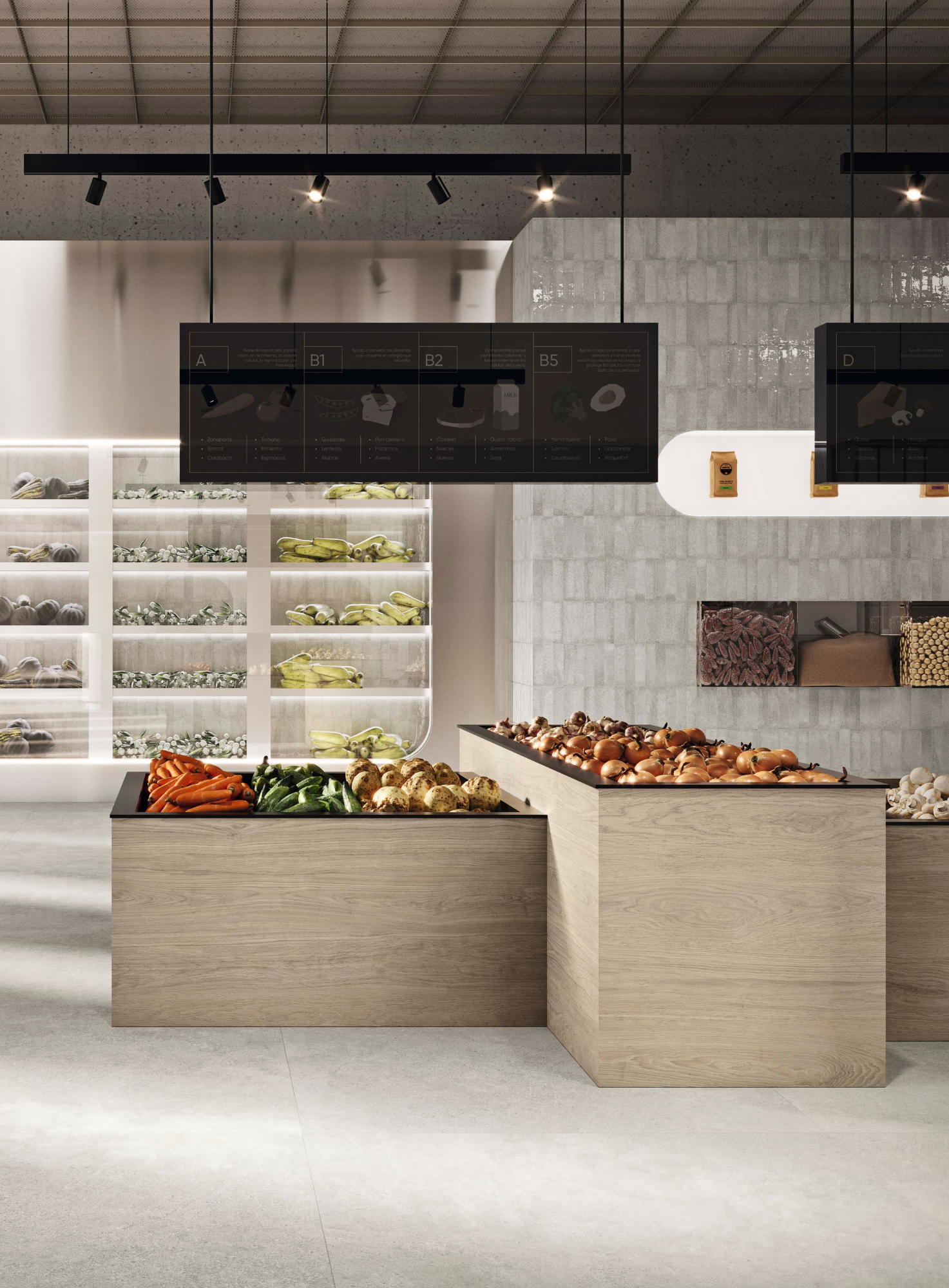The supermarket of the future emerges as a new actor on a stage in which clean narratives are dominating the food industry. With the ‘healthification’ of all market sectors, people are also calling for a transformation in the food sector and food production, from newly created companies to supply chains, formulas, packaging, brand marketing and even store criteria.
“I can easily imagine in the next thirty years that we’ll all have smart devices at home that gather personal data throughout the day, whether it’s a smart toilet or a smart mirror. This way, we’ll be able to measure lots of data about our health. The supermarket will then be somewhere we go to interpret those data. Think of it as personal nutritional advice or a supplement to your gut flora,” says Chloé Rutzerveld, curator of Embassy of Food. Innovation and the use of new technologies will be key in the creation of this ‘supermarket of the future’, based
on which new foods and systems will be introduced to pave the way towards healthier, more sustainable food habits.

Thanks to the boom in wellness, consumers are increasingly aware and want to be more informed about what they wear and put inside their bodies. David Johnson, co-founder of the clean medicines brand Genexa, explains that consumers are “increasingly more informed about ingredient transparency, efficacy and clean labels in food and beauty, among other areas.”
But that’s not all. For more than half a century, people have been collecting personal data about their health through sensors, smart watches and even tattoos and chips implanted under the skin. But why bother with all this information on the body’s different variables if nothing can be done with it?
To satisfy consumers’ commitment to a healthier diet, food producers and retailers will need to innovate in order to offer their clients conscious consumption that promotes healthy, local products. The supermarket of the future could act as the starting point


Health and wellness will continue to be a main priority for consumers, shifting from relatively rare experiences to everyday experiences. Thus, public spaces and services, such as supermarkets, will see an opportunity for collaboration and association with health and wellness brands.
According to Technavio, the health foods and wellness market has a growth potential of €198.2 million between 2020 and 2024. For all of these reasons, the supermarket of the future won’t necessarily be focused on shopping; instead, it will be a testing ground where transparency, co-creation and education related to food will be the protagonists.
Despite the ease of shopping online, 51% of American consumers prefer the overall experience of shopping in store (source: Vericast). The supermarket will be that physical place where a new generation of farmers, scientists, retailers and designers join forces to work on a hyper-local level to produce sustainable raw materials and innovative products. What happens when salmon can be farmed but it no longer needs to be in the shape of a fish? Biofarming of foods from animals is on the rise. It seems to be the sole alternative capable of feeding a global population that continues to grow. The population of Asia is expected to increase from 4.7 billion inhabitants to a maximum of 5.3 billion by 2055 (source: abrdn). When it comes to customers, they will receive education on the environment, the production of these raw materials, and they’ll receive products tailored specifically to their physical and mental needs.
Technology and AI will be critical in the development of products based on the health parameters of each person, but technology fatigue will force developers to improve technological devices with the goal of hiding them from users.
Apart from health variables, electronic and smart devices will serve consumers by showing them other parameters, including nutritional, sustainable and origin information. They will also help dynamic pricing strategies. Software like Wasteless helps to increase supermarket profits by optimising prices based on expiry dates, which translates to a reduction in waste and a decrease in the amount consumers need to spend.
Supermarkets will become holistic stores that use health-related personal data to offer users personalised nutrition advice by proposing and creating in situ foods developed by clients themselves, and spaces driven by AI that will help visitors to make better decisions for themselves and the planet.
Going to the supermarket will become an increasingly social activity. Stores will be more digitalised, but they will also accommodate meeting spaces and even create content to recommend products from some clients to others.
In traditional supermarkets, interior design and product displays are at the mercy of prices and offers. In the coming years, there will be a shift in the paradigm where price won’t be prioritised as much as health. This will affect the visual design of a space, with it becoming more pleasant, welcoming, informative and less aggressive
